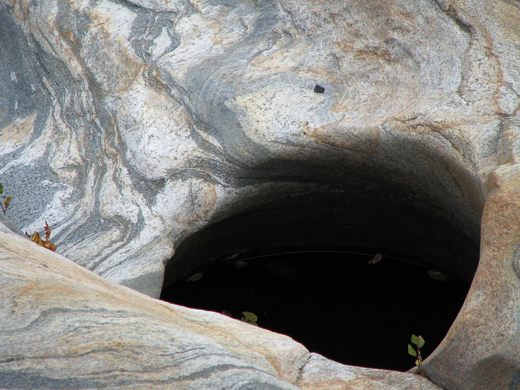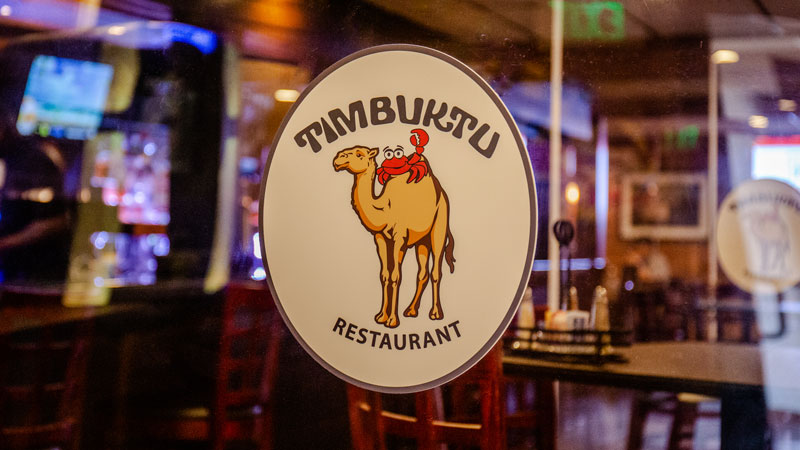Crab Cakes, Glacial Potholes, Bulls and Rock Art? Back to business? Not quite
 |
| On the famous Atlantic City Boardwalk September 8, 2022 |
.jpg) |
| Hurricane Earl riled up the Atlantic Ocean last week. Jersey Shore residents were warned that seawater levels are going up. |
 |
| There is a pink moon in this picture. Can you find it? It's a dot! Travelling 85mph on 9-9-2022, it's fun to try and shoot the moon. |
By BIRTHDAY GIRL LT,
Well, September is birthday month and we just returned from a quick road-trip to New Jersey and Maryland. I wanted crab cakes and the Baltimore area is definitely where we went. LOOK AT THE RESTAURANT
We also spent a few nights at the Mohegan tribe's casino-resort "RESORTS" - my sis-in-law also has a September birthday so we always celebrate together. Sandy LOVES crab legs! We pigged out on crab.
 |
| Over fifty whirling pools left by the glacial age Source: Glacial Potholes – Shelburne Falls, Massachusetts - Atlas Obscura |
I will be doing a quick reading and selling a few books on Sunday Oct. 9 at the 2nd annual Indigenous Peoples' Celebration 11-4pm at the Shelburne Historical Society in Shelburne Falls, MA. Please come by!
You might recognize the glacial potholes (above) are also on my latest book Finding The Invisibles. It's quite amazing to see these ancient holes and rocks in person.
👉Every birthday I go watch the OXEN Pull at the county fair. I have done this since I moved here in 2004.
Looking back: I have come to realize there were only two types of people in 4500 BC: The Ancient class who declared they were royal and the rest of humanity who they enslaved. The royals didn't work. There were no "middle class" people back then - it was the owners and the serfs. It's important to remember that - it's not that long ago.
And making people do what these deranged evil "royals" demanded included torture and scaring people into submission with threat of torture:
The Brazen Bull and Other Ancient Torture Devices https://t.co/nlMKt76xHe
— Trace kalala Hentz (@wildlyTLH) September 13, 2022
Random Facts: Five.
The Romanian ruler Vlad the Impaler, inspiration for Bram Stoker's Dracula, built his Castle Dracula at Curtea de Argeș using the forced labour of captive men and women. Elderly captives were impaled as unfit to work. #Dracula #Castle #History #facts #Novel pic.twitter.com/CuQntT70IC
— Dr Richard Sugg (@DrSugg) September 13, 2022
September is #SuicideAwarenessMonth and while it’s the 12 leading cause of death in the world, it’s largely hidden, ignored and removed from the dominant adoption narrative that focuses on the celebrated act of adopting a child. Suicide is an outcome of adoption. #truthislouder pic.twitter.com/Wg3oMLJp2h
— Moses Farrow (@MosesFarrow) September 11, 2022
👉Very pleased to share with you a sneak preview of my new film as I head to the World Premiere at @BostonFilmFest #HawaiianHistory #Hawaii #Indigenous #NativeTwitter #Screenwriter #movies #LandBack #KingdomHawaii https://t.co/NcpG4x1gij
— John Fusco (@JohnFusco12) September 13, 2022
The People of Long Ago: “World’s Longest Art Gallery”
The Brazen Bull and Other Ancient Torture Devices https://t.co/nlMKt76xHe
— Trace kalala Hentz (@wildlyTLH) September 13, 2022Random Facts: Five.
The Romanian ruler Vlad the Impaler, inspiration for Bram Stoker's Dracula, built his Castle Dracula at Curtea de Argeș using the forced labour of captive men and women. Elderly captives were impaled as unfit to work. #Dracula #Castle #History #facts #Novel pic.twitter.com/CuQntT70IC
September is #SuicideAwarenessMonth and while it’s the 12 leading cause of death in the world, it’s largely hidden, ignored and removed from the dominant adoption narrative that focuses on the celebrated act of adopting a child. Suicide is an outcome of adoption. #truthislouder pic.twitter.com/Wg3oMLJp2h
— Moses Farrow (@MosesFarrow) September 11, 2022👉Very pleased to share with you a sneak preview of my new film as I head to the World Premiere at @BostonFilmFest #HawaiianHistory #Hawaii #Indigenous #NativeTwitter #Screenwriter #movies #LandBack #KingdomHawaii https://t.co/NcpG4x1gij
— John Fusco (@JohnFusco12) September 13, 2022NINE MILE CANYON, Utah — Remarkably well-preserved depictions of animals, symbols, and human figures adorn the sleek red rocks of Nine Mile Canyon, composing what experts refer to as the largest continuous collection of Indigenous rock art in North America. Located in the Book Cliffs mountain range three hours south of Salt Lake City, the canyon takes its name from famed western explorer John Wesley Powell’s mapping triangulation of a nearby area.
In reality, Nine Mile Canyon encompasses a stretch of approximately 45 miles with perhaps as many as 10,000 ancient petroglyphs (images carved into rock surface) and pictograph (images painted on rock surface) sites, many of which are visible from the paved roadway.Since the discovery of rich natural gas reserves on the nearby West Tavaputs Plateau two decades ago, conservationists have found themselves at odds with regional energy interests pursuing these resources.

Nine Mile Canyon has long been a cultural wonder for the various
tribes whose ancestors created the images: the Pueblo, Pueblo of Zuni,
and Hopi. The latter tribe refers to their ancient predecessors as Hisatsinom
or “The People of Long Ago” while Euro-American settlers have labeled
this ancient group as the “Fremont Indians,” by virtue of their
proximity to the Fremont River (namesake of white politician and western
explorer John C. Fremont).
The ancient architects of Nine Mile
Canyon’s rock art congregated in this area because of the canyon’s
proximity to nearby water sources — vital in an otherwise arid
environment — and are thought to have mastered corn cultivation in
addition to hunting and plant foraging. Centuries later, the Ute tribe,
who were ancestral foragers in the region, added to the panels with
narratives about their existence after the arrival of white colonizers,
evident from depictions of figures on horseback. Combined with the
ancient petroglyphs, these depictions add a historical dimension to this
rare visual account of the region’s past.
Archeologist Jerry
Spangler is a regional expert who has researched the site for decades.
While his work has revealed the richness of this region’s history, he
acknowledges that much remains unknown. “Though carbon dating places the
Hisatsinom in the region nearly two thousand years ago,
contact may have occurred during the archaic period centuries before,”
he told Hyperallergic in a phone interview.

Spangler hypothesizes that the Hisatsinom may have been
viewed as ethnic outsiders to other ancient peoples in the region.
Various depictions of warfare suggest this theory, along with dwellings
that were placed in hard to reach, defensive positions.
Now,
centuries later, conservation groups are battling with state officials
over the region’s booming oil and gas industry, which some worry may
adversely impact the preservation of the ancient sites.
The road
running through Nine Mile Canyon was completed in 1866 by the “buffalo
soldiers,” an all-African-American regiment of the 10th Cavalry. In
2014, much of the road was paved. Local officials claimed to want to
prevent dust accumulation on the ancient art, but the road plainly
facilitated energy extraction efforts.

In 2016, the Bureau of Land Management (BLM) scrapped plans to lease two parcels of the canyon for oil and gas exploration after outcry from various organizations drew attention to the risk to the site’s preservation.
Earlier this year, the Utah State Legislature proposed SB51, which
sought to draw $53 million from an existing fund to finance a highway
through Nine Mile Canyon, according to reporting by the Salt Lake Tribune. This funding proved controversial and was scrapped before the bill’s passage in March of this year.
Nine
Mile Canyon sits in Carbon County, which has in recent years
collaborated with federal officials to plan the construction of the
Uinta Basin Railway through nearby Price Canyon. Although the railway
will not run through Nine Mile Canyon, it will likely exacerbate traffic
in the area, something conservation groups will continue to monitor.

The preservation of Indigenous cultural heritage is continually
contested in a state that has seen drastic shifts in policy surrounding
monuments and public lands, the protection of which is often subject to
the political ideologies of the present administration. In October 2021,
President Joe Biden restored federal protection over Utah’s Bears Ears
National Monument, a sprawling area in Southern Utah that is home to
countless cultural sites. The work of the Bears Ears Inter-Tribal Coalition has been instrumental to restoring
and protecting invaluable artworks, artifacts, and other sacred
locations from reoccurring threats of vandalism, theft, and neglect.
Though
less widely known, local experts consider Nine Mile Canyon an equally
irreplaceable cultural heritage site. Ute spiritual leader, filmmaker,
and storyteller Larry Cesspooch describes Nine Mile Canyon as one of the
great wonders of the world, saying,
“To me, the cliffs and the whole structure of the canyon are like cathedrals. The rock writings are like scripture. It’s a holy place and a sacred space like any church, but it is God’s church, it’s the Creator’s church.”
If anyone needs to reach me: use the contact form on this blog.
Have a walk in beauty and celebrate all our blessings.
WE RESIST ENSLAVEMENT!







Comments